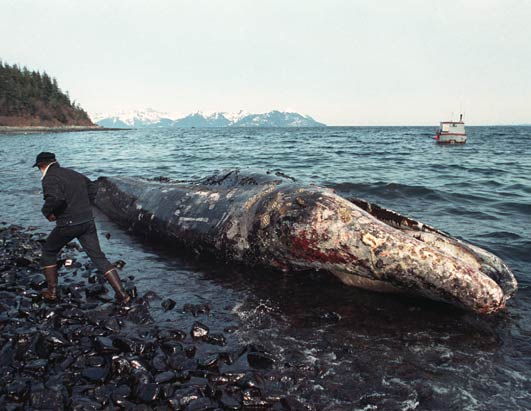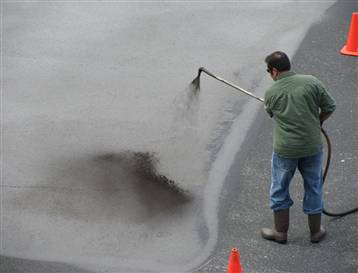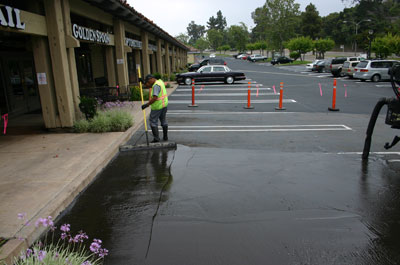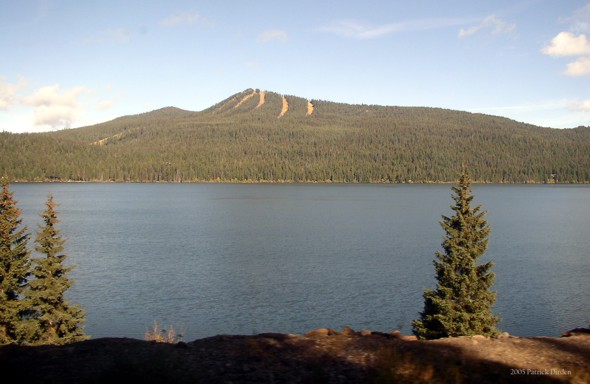20 Yrs Later- Alaskan Beaches Remain Polluted by Oil From Exxon Valdez Spill
 February 18, 2010
February 18, 2010  Kyriaki (Sandy) Venetis
Kyriaki (Sandy) Venetis  The Exxon Valdez oil spill killed tens of thousands of animals during the initial days of the disaster alone. Photo courtesy of Nature’s Crusaders.
The Exxon Valdez oil spill killed tens of thousands of animals during the initial days of the disaster alone. Photo courtesy of Nature’s Crusaders.
On Thursday evening, March 23, 1989, the Exxon Valdez, a very large crude carrier and one of Exxon’s then two largest oil tankers, left the Port of Valdez for Long Beach, Calif.
“The shipped passed through the Valdez Narrows and the pilot disembarked. Captain Joe Hazelwood ordered the vessel to procced outside the normal traffic separation lanes in order to avoid ice which had calved from the Columbia Glacier and was reported near the shipping lanes.
“The captain indicated to the mate where he wanted the vessel to turn to bring it back into the shipping lanes and then left the bridge. The ship did not make the turn prescribed by the captain, and shortly after midnight on Friday, March 24, 1989, struck Bligh Reef and fetched up hard aground.
“The grounding punctured the single-hulled vessel, resulting in the rupture of 11 of the vessel’s crude oil tanks. As a result, over 11 million gallons of crude oil were released into the pristine environment of Prince William Sound.”
This is how Craig Tillery, deputy attorney general for the Alaska Department of Law, described the events of those days to the Alaska Forum on the Environment during his keynote presentation, last February, when he brought attendees up to speed on the continuing effects of the disaster and restoration efforts.
As part of that address, he talked about the fact that about 10 years ago the Exxon Valdez Oil Spill Trustee Council noticed that “oil remained in greater quantities and at greater levels of toxicity than anyone that anticipated.”
Recent research findings from Temple University say that “it is estimated that nearly 20,000 gallons of oil remain in the beaches.”
Late last month, Nature Geoscience published the results of a three-year study by researchers from Temple University and China University of Geoscience which examined the effects of oil still remaining from the spill.





